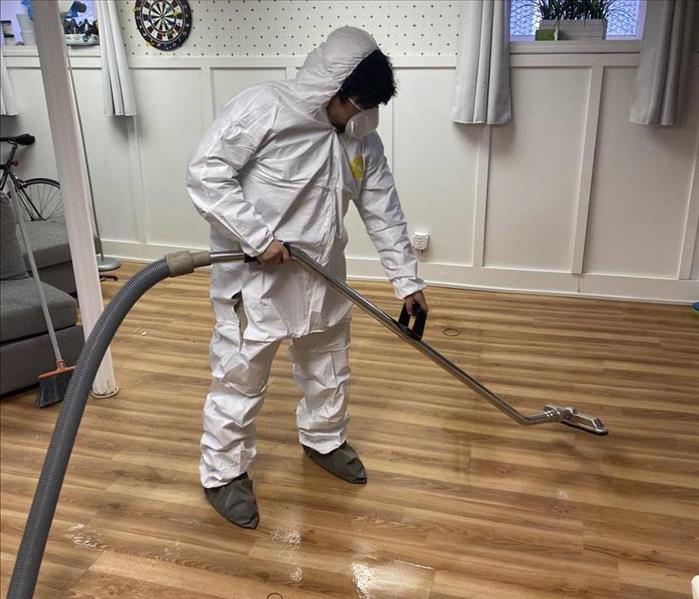Preserving Your Hardwood Floors During a Water Damage Event
6/24/2024 (Permalink)
 For expert assistance with water damage restoration and hardwood floor preservation, contact SERVPRO today.
For expert assistance with water damage restoration and hardwood floor preservation, contact SERVPRO today.
Hardwood floors add beauty and value to your home, but they can be particularly vulnerable during water damage incidents. Whether from burst pipes, appliance leaks, or natural disasters, acting quickly and effectively is key to minimizing damage and preserving your hardwood floors. Here’s how you can protect and restore them:
1. Act Fast: Time is critical when hardwood floors are exposed to water. Begin by identifying the source of water and stopping it if possible. The faster you start the drying process, the better chance you have of preventing permanent damage.
2. Remove Standing Water: Use a wet/dry vacuum or mop to remove standing water from the floor surface. Be gentle to avoid spreading water to unaffected areas or causing further damage to the wood.
3. Dry Thoroughly: Promote drying by opening windows, using fans, and running a dehumidifier to reduce moisture levels in the air and on the floor. Avoid excessive heat, as it can cause wood to warp or crack.
4. Monitor Moisture Levels: Use a moisture meter to monitor the moisture content of the wood. Ensure that moisture levels are brought back to normal before attempting any repairs or refinishing to prevent future issues like mold growth or wood swelling.
5. Clean and Disinfect: Once dry, clean the hardwood floors with a wood-safe cleaner to remove any dirt or contaminants brought in by the water. If there is concern about microbial growth, consult with professionals about appropriate disinfection methods.
6. Prevent Further Damage: To prevent future water damage, inspect and maintain plumbing regularly, install leak detectors near water sources, and consider using rugs or mats in high-risk areas to catch water before it reaches the floor.
7. Consult Professionals: For severe water damage or if you’re unsure about the extent of damage to your hardwood floors, it’s crucial to seek professional help. Experienced restoration professionals like SERVPRO® have the expertise and equipment to assess, mitigate, and restore hardwood floors effectively.
8. Refinish if Necessary: Depending on the severity of the water damage, refinishing may be required to restore the appearance and structural integrity of your hardwood floors. This process involves sanding, staining (if desired), and applying a protective finish to enhance durability and aesthetics.
Conclusion:
Preserving hardwood floors during a water damage event requires swift action, proper drying techniques, and sometimes professional intervention. By following these steps and partnering with restoration experts like SERVPRO, you can minimize damage, restore your hardwood floors, and maintain the beauty and value of your home for years to come.
For expert assistance with water damage restoration and hardwood floor preservation, contact SERVPRO today. We’re here to help restore your home to its preloss condition.
Trust SERVPRO for reliable water damage restoration and hardwood floor preservation services. Contact us now to schedule an assessment and start restoring your home.






 24/7 Emergency Service
24/7 Emergency Service